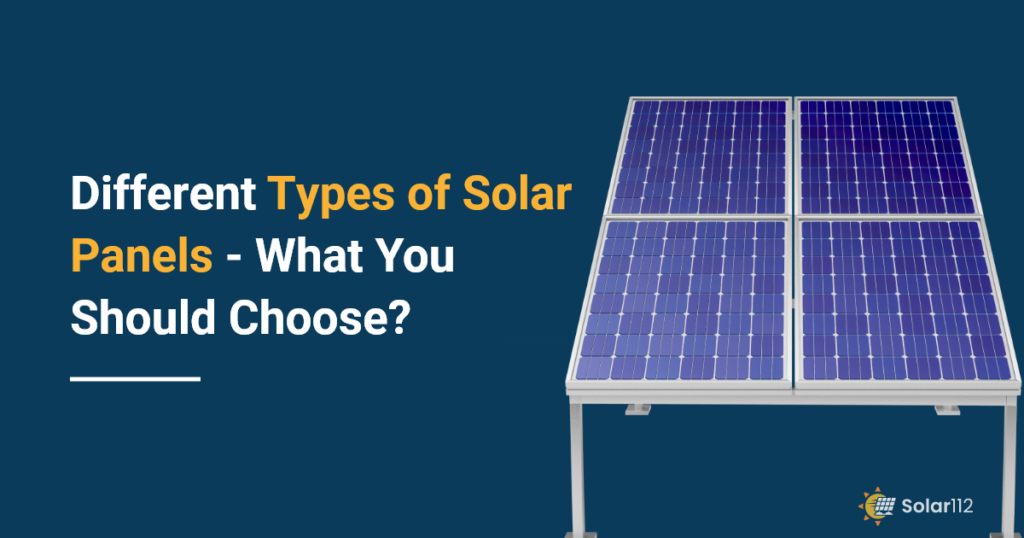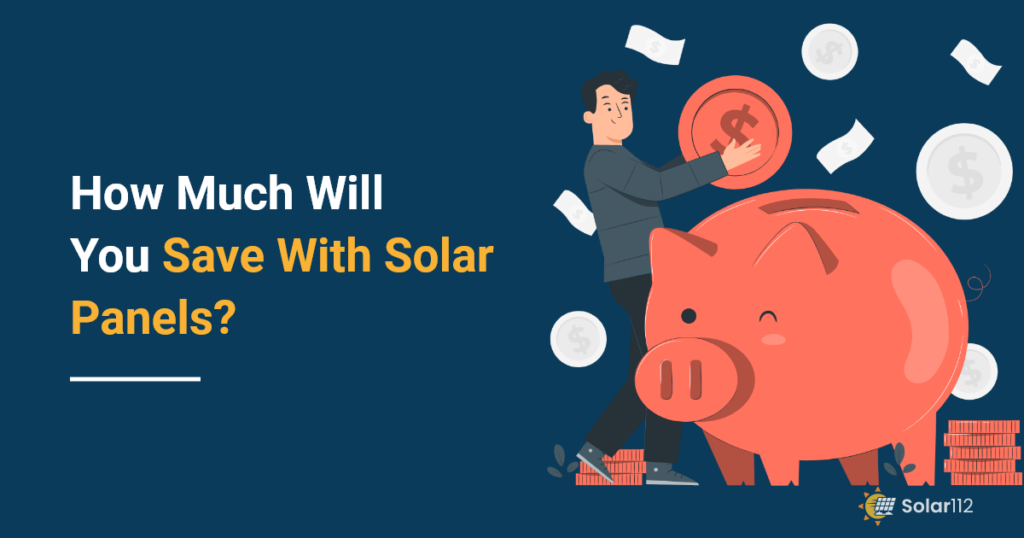The number of solar panel installations has exploded in the last decade in the United States. However, one of the major concerns that come to the mind of homeowners is “how to choose the best type of solar panel for their property“?
And believe us, this might sound simple, but there are critical considerations involved that went into making this important decision.
Key Takeaways
- Residential solar panels are of three types: Monocrystalline Solar panels, Polycrystalline Solar panels, and Thin-film Solar panels.
- Monocrystalline and polycrystalline solar panels have their cells made of silicon wafers whereas the thin-film solar panel’s cells are made from a variety of materials like CdTe, CIGS, or a-Si.
- Monocrystalline solar panels have a solid black color with rounded corners; polycrystalline panels have a blue hoe; and thin-film panels have a black or blue hoe with a uniform surface.
- The efficiency rate of Monocrystalline solar panels ranges between 17 and 22%, polycrystalline 15–17%, and thin-film 10–13%.
- Monocrystalline panels are the most expensive, followed by polycrystalline and then thin-film.
- Monocrystalline panels are ideal for limited rooftop space; polycrystalline panels have sufficient area and a lower budget; and thin-film panels are most suitable for commercial properties, RVs, and boats.
For example, did you know there are, in general, twelve types of solar panels on the market? So, how would you decide the best one and, most importantly, the right one?
Don’t worry!
We have curated this comprehensive guide in which we will dig deeper into the types of residential solar panels, their applications, efficiency, pricing, and more. Also, in the end, we will help you in making an informed decision regarding which type of solar panel you should go with while installing it at your home.
So, sit tight and grab a cup of coffee because it is going to take a while.
- Key Takeaways
- What are the major types of solar panels?
- What are solar panels made out of?
- What do these solar panels look like?
- What are the efficiency rates of these solar panel types?
- Which type of solar panel is the most expensive?
- What type of solar panel is best for your rooftop installation?
- Additional Factors to Consider
What are the major types of solar panels?
The majority of residential solar panels fall into the following three categories:
- Monocrystalline Solar Panel
- Polycrystalline Solar Panel
- Thin-film Solar Panel
All these solar panels are made of different photovoltaic cells, so they possess different characteristics, deliver different levels of performance, hugely vary in their pricing, and have different areas of application.
For instance, monocrystalline solar panels are better for households with small rooftop spaces since they are more energy-efficient. however more costly when compared with polycrystalline crystals.
In fact, according to a 2022 analysis from the National Renewable Energy Laboratory (NREL), the best solar panels that have several circuit energy systems can produce up to 39 percent more energy.
In the latter part, we will talk about these factors in detail. For now, let’s take a quick look at these different solar panels.
Monocrystalline Solar Panels
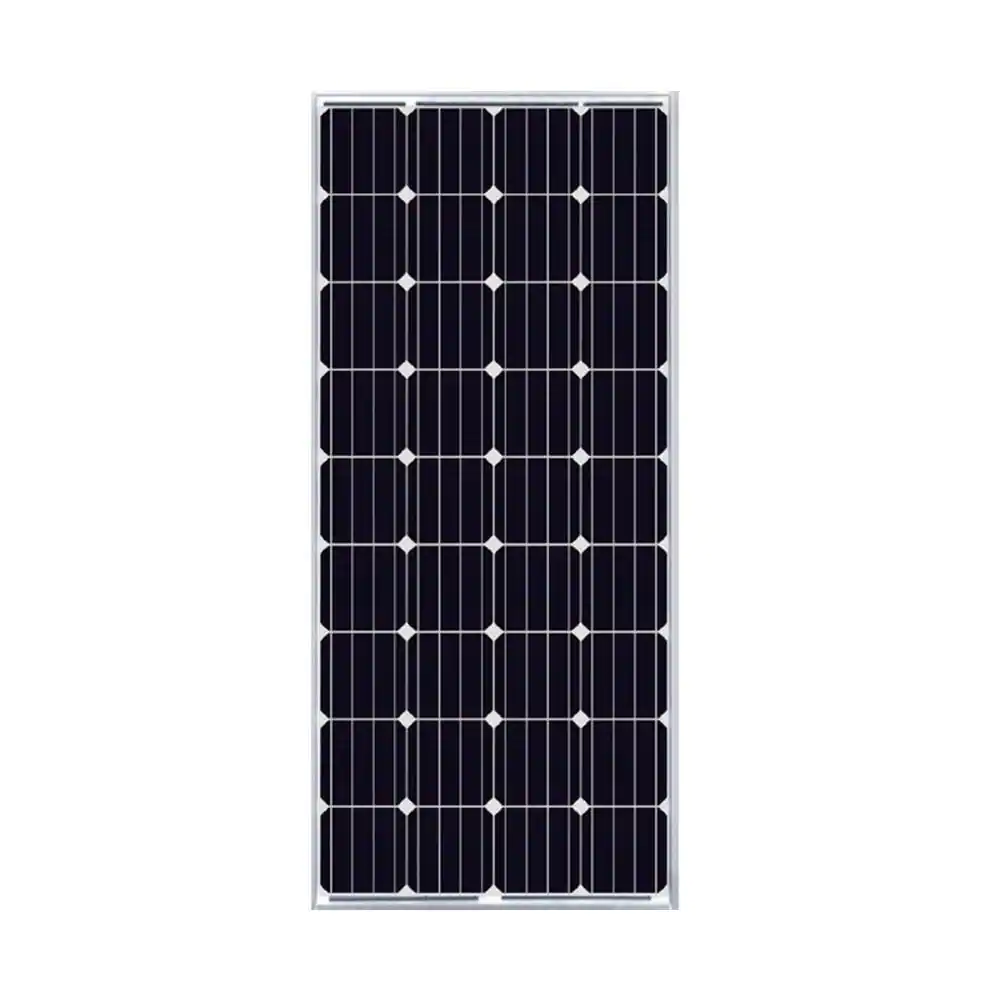
The highest quality silicon is used in the production of monocrystalline or mono-solar panels, which can produce up to 20% more solar energy than conventional solar panels. Consider it the top option for families that are interested in saving a lot but don’t have enough room for a rooftop solar energy system. Additionally, they are incredibly durable for both business and residential areas and require little upkeep.
Even though mono-crystalline solar panels are predicted to have an average lifespan of around 25 years, solar panel installation is somewhat expensive. For instance, the cost to install a typical 6 KW PV system would be in the range of $6k to $9k, or around $1 to $2 per watt.
Polycrystalline Solar Panels
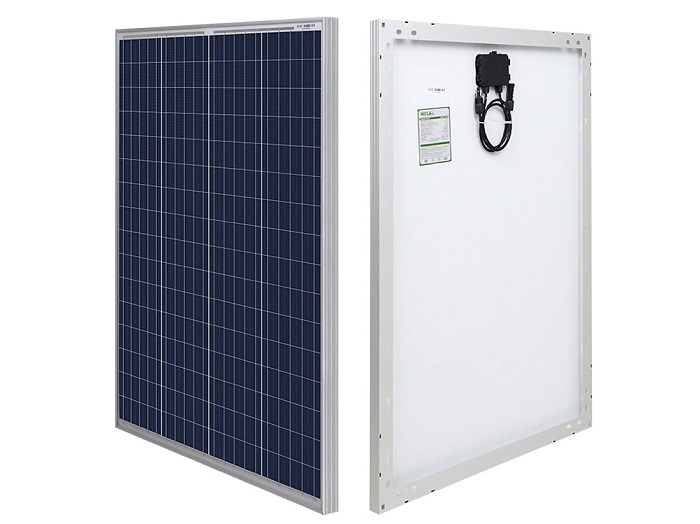
Polycrystalline solar panels can only produce 15-17% of their energy, making them comparatively less energy-efficient than monocrystalline solar panels. Therefore, if your property has enough space, these panels are less expensive and are seen as a budget-friendly option.
For instance, you would spend about $5.4k to $6k, or roughly $0.9 to $1 per watt, to outfit a typical 6-KW polycrystalline PV system. However, in hot climates throughout the year, solar panels perform poorly.
Thin-Film Solar Panels
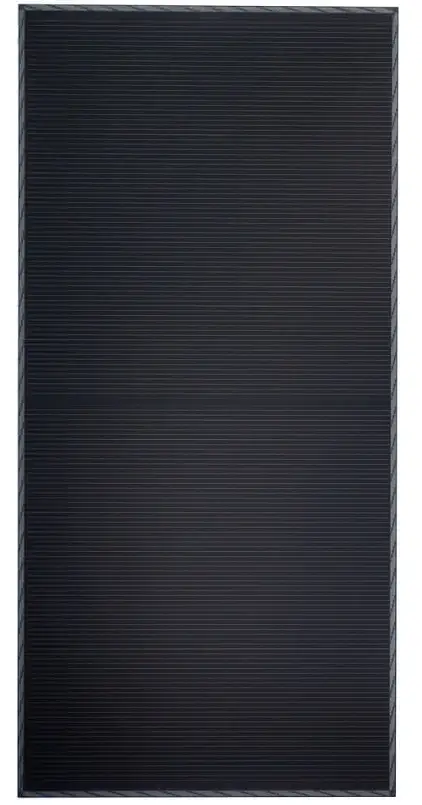
Thin-film solar panels is the another type of solar panels that are the least energy-efficient when compared to the rest of the panels and can provide up to 6–15% of the sun’s energy. They are also the most cost-effective option for minor projects like converting RVs, boats, or other small buildings into shelters. These panels are a great choice for business settings because they also need larger spaces.
What are solar panels made out of?
The type of semi-conducting material utilized in the manufacturing of solar cells is the key factor in determining how much power is generated and what makes these solar panels unique. Let’s find out what substance these solar panels are made of.
What are Monocrystalline and Polycrystalline Solar Panels made out of?
The solar cells in each of these panels are constructed from silicon wafers. The silicon wafers are grouped together into rows and columns to form a rectangular shape, which is then covered with a sheet of crystal glass and then framed together to create a single panel of this sort.
Despite the fact that each of these panels is constructed from the same material, the composition of the silicon differs. For instance, mono-ones are manufactured from a single silicon crystal, whereas poly-ones are made from silicon wafers that have been fused together in a mold and then cut into cells.
What are Thin-film Solar Panels made out of?
The cells of thin-film solar panels, in contrast to the previous two, are built from a range of materials. For instance, Cadmium Telluride (CdTe) makes up the most popular thin-film panel cell. In order to maximize sunlight absorption, the manufacturers of this sort of panel sandwich a layer of CdTe between transparent conducting layers, locking it with a glass layer for further protection.
This is one type of thin-film solar panel. Then there are other panels in this category that are made from substances like amorphous Silicon (a-Si) or Copper Indium Gallium Selenide (CIGS).
The bottom line is that the amount of power produced by solar panels varies based on the composition of the cells from which they are built, which directly affects the amount of money you save on utility bills.
What do these solar panels look like?
The use of different materials and the different production processes yield different appearances for each of these panels.
Monocrystalline: solid black with rounded corners
Due to the interaction of sunlight with the silicon cells inside, monocrystalline solar panels appear to be black in colour and appeance-wise they have rounded corners. Despite the fact that the colour of the solar cells doesn’t change, there are a few alternatives for the metal frames and the back sheets of the solar cells (which can be either black or silver or white).
Polycrystalline: blue rectangular cells
Polycrystalline solar panels’ cells are made of silicon fragments, so the light interacts with them differently, resulting in the bluish colour of the panels. Similar to monocrystalline panels, polycrystalline panels have options for their back sheets (silver or white) and metal frames (silver).
Thin-film: black or blue uniform surface
These panels have a homogeneous surface area and a neat black or blue appearance. The thin-panel solar panels’ cells are extremely thin, as suggested by their name, most likely because each of their wafers is almost 350 times thinner than the crystalline ones. They also have low-profile technology, which sets them apart from crystalline panels, offers them an excellent aesthetic, and greater versatility.
What are the efficiency rates of these solar panel types?
Monocrystalline: boasts the highest performance
The efficiency rate of Monocrystalline solar panels ranges between 17 and 22%, making them the most efficient solar panels of all. Because they boast the highest performance, these solar panels are considered an ideal choice for homes with a smaller rooftop area, as only a fewer number of panels would be sufficient to power an average American family.
Aside from being the most efficient, monocrystalline panels also hold the record for having the highest capacity, with power output ratings ranging from 320 to 375 watts or even more.
Polycrystalline: medium performance
Polycrystalline solar panels are the second most efficient solar panels overall, with an efficiency rate that varies between 15 and 17%. The cause of the performance decline is the decreased electron mobility of solar panel solar cells.
The power output capacity rating for polycrystalline panels ranges from 240 to 300 watts, or even more occasionally.
Thin-film: lowest performance
The thin-film solar panels provide the lowest efficiency rate of between 10 and 13%. So, if you are planning to install them on your property, you will need a larger rooftop area to cover the power generation gap and improve overall performance.
Which type of solar panel is the most expensive?
All these types of solar panels have a different manufacturing process, which results in a different market price tag for each panel.
Monocrystalline: highest cost
Monocrystalline solar panels are the most expensive of all of them. The clear reason is its manufacturing process. The panel’s solar cells are made from silicon crystals. So during all the production time, the manufacturer has to bear the cost of these crystals along with the energy-intensive process, which is also called Czochralski.
Polycrystalline: the in-between
Polycrystalline panels are cheaper than monocrystalline panels. Their solar cells are made from the residue waste of the mono-one cell manufacturing process. This means not the entire crystal of silicon is used, but a fragment of it is.
However, over time, as people are more willing to invest in high-efficiency and high-power capacity panels, the market gap between these two crystalline solar panels is narrowing.
Thin-film: lowest cost
As explained earlier, thin-film solar panels are made from a wide variety of materials. So which type of thin-film panel you will be using will determine its final cost. However, regardless of the option you choose, these panels come at the lowest cost when compared with the crystalline panels.
The reason being that they are lighter in weight, hence less labour intensive both in terms of installation and securing them on your rooftop area. This results in lower end-user costs.
What type of solar panel is best for your rooftop installation?
The type of solar panel you should choose solely depends on your property and end goals. Each of these solar panels has its own pros and cons and can be used in various circumstances. However, to help you narrow down your choices, here are some briefs for you:
Homeowners who have sufficient space on their property can go with the comparatively cheaper polycrystalline solar panels. This will fill the efficiency gap and meet your requirements.
However, it is advised to choose the most effective but pricey monocrystalline solar panels in situations when rooftop space is restricted and there is a need for additional power savings.
And as far as the thin-film solar panels are concerned, these are the least efficient, yet they are the least expensive, light-weight, and durable, which makes them an ideal choice for commercial areas.
As industrial sites have more roof space, they can easily generate a significant amount of electricity with bulk installations. Additionally, these panels can be employed in boats or RVs.
So, now that you know which panels are ideal in which scenarios, we would suggest you take a good look at your requirements (in terms of how much you are willing to invest and how much you want to save).
And if required, take a free consultation from the solar panel service provider; they will inspect your site, make a chart of your end goals, and come up with the best solution for you.
Additional Factors to Consider
While you’re planning the finances for a right soar panel type system installation, unexpected expenses like upkeep, cleaning, and fixing may pop up. What you should know is as follows.
Roof Repair
When you install solar energy systems, you may need to correct any roofing issues. Roof repairs range in price from $145 to $1,495 for minor issues and from $1,495 to $6995 for large ones. Solar panels cannot be installed on a roof unless it is structurally sound.
Maintenance
Solar panel upkeep costs range from $135 to $175 per assistance, or $275 to $715 yearly. According to the manufacturer’s specifications and the documentation provided with the panels, they may require periodic upkeep no less than twice a year.
Cleaning
A typical solar energy system with 16 to 20 panels will cost $424 to $523 to clean. This works out to about $24 per solar panel. The efficiency of solar panels can be significantly impacted by pollen particles, soil, trash, and other sludge, resulting in a decreased energy output. As a result, you ought to clean your solar panels at least twice a year.
Tree Trimming
On average, pruning trees prices from $245 to $695. The entire cost of the work will be determined by the kind of tree, the quantity of trees, and the complexity of the job, with bigger, difficult-to-reach trees that require extensive trimming solutions paying the most money.
So,
now summing up the article and hope you have a clear picture about different types of solar panels and which one is best suitable for you. But I will suggest you to book a inspection for your property and consult with a reliable solar installer.
